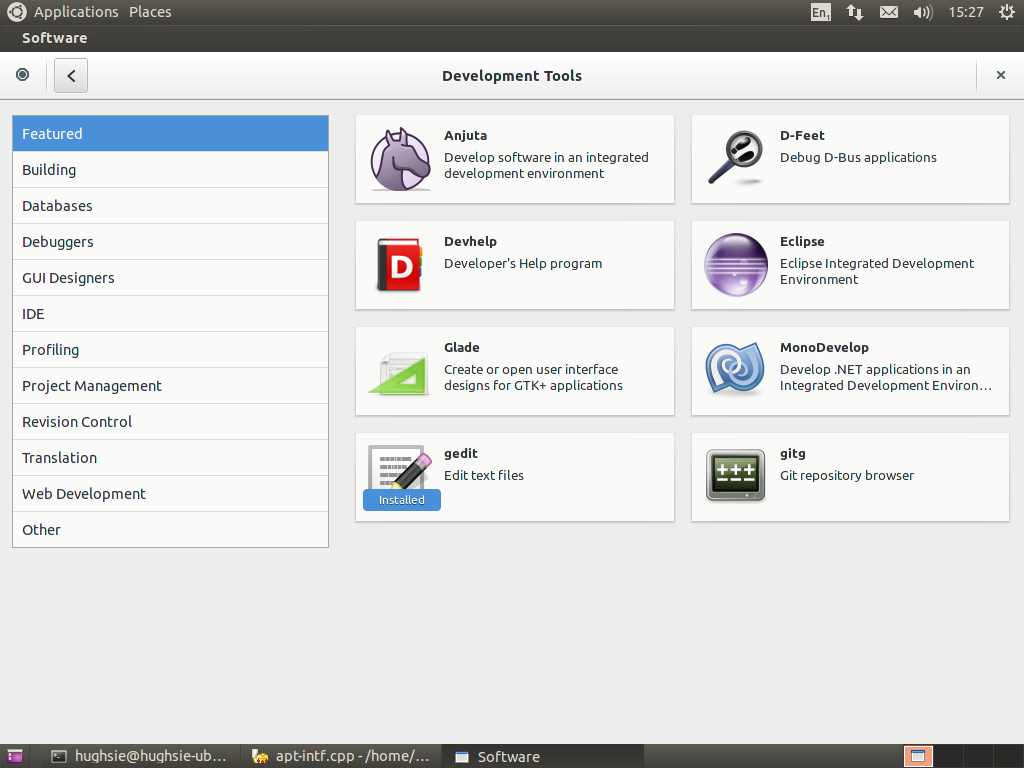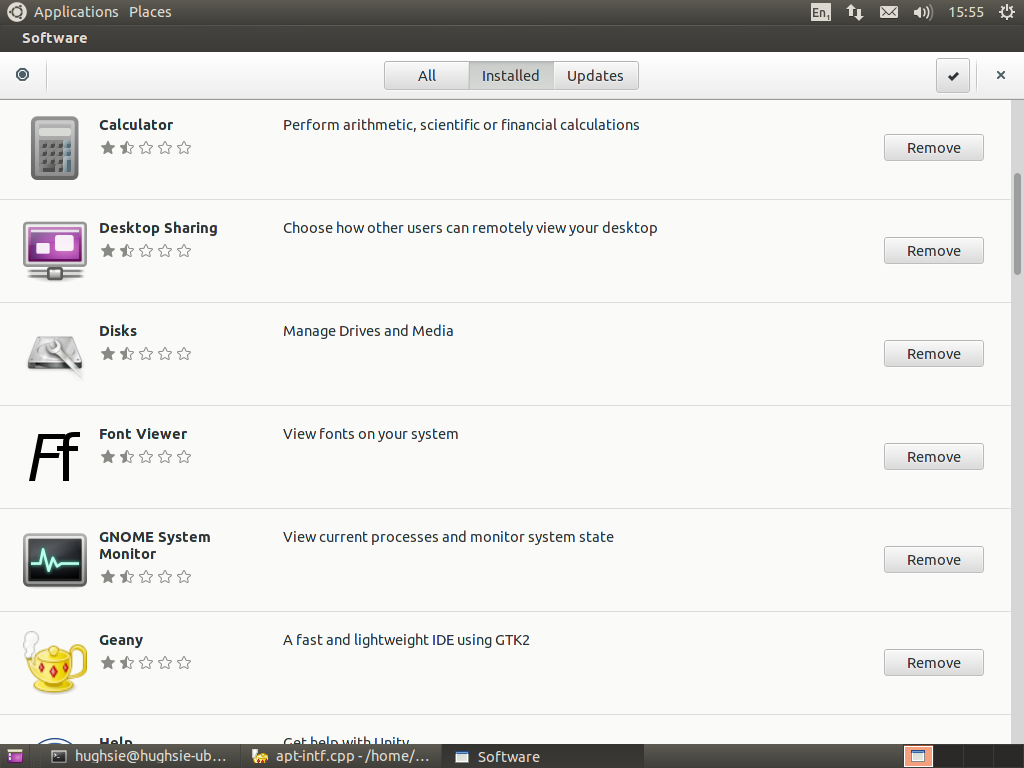So I did a bit more hacking on PackageKit, appstream-glib and gnome-software last night. We’ve now got screenshots from Debian (which are not very good) and long application descriptions from the package descriptions (which are also not very good). It works well enough now, although you now need PackageKit from master as well as appstream-glib and gnome-software.
This is my last day of hacking on the Ubuntu version, but I’m hopeful other people can take what I’ve done and continue to polish the application so it works as well as it does on Fedora. Tasks left to do include:
Get aptcc to honour the DOWNLOADED filter flag so we can show applications in the ‘Updates’ paneGet aptcc to respect the APPLICATION filter to speed up getting the installed list by an order of magnitudeGet gnome-software (or appstream-glib) to use the system stock icons rather than the shitty ones shipped in the app-install-data package- Find out a way to load localized names and descriptions from the app-install-data gettext archive and add support to appstream-glib. You’ll likely need to call
dgettext(),bindtextdomain()andbind_textdomain_codeset() - Find out a way how to populate the ‘quality’ stars in gnome-software, which might actually mean adding more data to the app-install desktop files. This is kind of data we need.
Find out why aptcc sometimes includes the package summary in the licence detail position- Improve the package details to human readable code to save bullet points and convert to a UTF-8 dot
- Get the systemd offline-updates code working, which is completely untested
Find out why aptcc seems to use a SHA1 hash for the repo name (e.g.pkcon repo-list)Find out why aptcc does not set the data part of the package-id to be prefixed withinstalled:for installed packages
If you can help with any of this, please grab me on #PackageKit on freenode.



What is that additional button on the left edge of the header bar? Is that a new addition in Gnome 3.12, or is it Ubuntu-specific? It looks like a ‘stop’ icon.
It’s supposed to be in the gnome-shell bar, but as no shell it gets stuck there. I’ve just fixed the bug that means it’s the application icon not the stop icon.
The icons included in app-install-data are the same icons used by the applications. What’s the problem with them?
For Debian, I consider using the SVG icons where available. I’m not sure whether this is much better than the current solution, ordered PNG > SVG > XPM.
SVG icons are of course fine as a source image, but when rendering them they take ~50x more time (or at least, the more complicated ones do) to render compared to a png. In Fedora we can render *all* the startup (.png) icons in ~25ms, but in Ubuntu *each* image takes longer than this, so the UI stutters and loads in phases with 100% CPU for ~5 seconds, which looks broken.
Is there a chance that Gnome apps will get some form of detection whether it’s running in setups that do not play well with the unified title bar approach (eg. hide the in-app X button)?
I thought this happened now, but I guess I’m not the right person to ask :)
Thanks a lot for your work!
Why is the main Ubuntu IDE, QtCreator, is not displayed inthe Ubuntu Developer Tools?
https://github.com/hughsie/createrepo_as/blob/master/README.md#guidelines-for-applications
I just installed Fedora 20 on a virtual machine. Switched from Ubuntu because Ubuntu’s recent releases are too Mac-like, only without actually working.
This… this is not a package manager. There are 2 reasons to use Linux: To have a command line, and to have a package manager. A package manager lets me go through a list of thousands of packages, choose the ones I want, and leave the computer for the day while it installs a few thousand packages.
This software does not list the packages available. You have to browse them.
And you have to install software ONE PACKAGE AT A TIME.
(The “search” functionality doesn’t work, BTW, so I can’t actually find any packages anyway. Search for something, and the software just puts up the “waiting” circle of dots and stays that way forever.)
That is literally impossible to do. It would take me a month of work, full-time, to install all the packages I want. If I wanted to install packages one at a time I would use Windows.